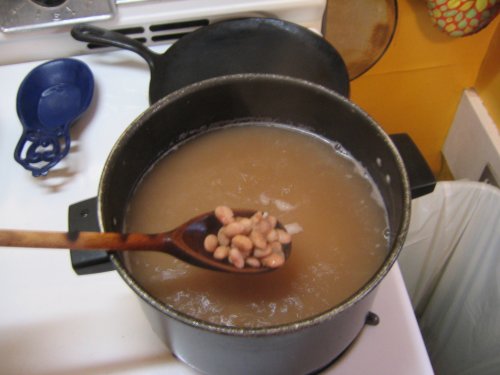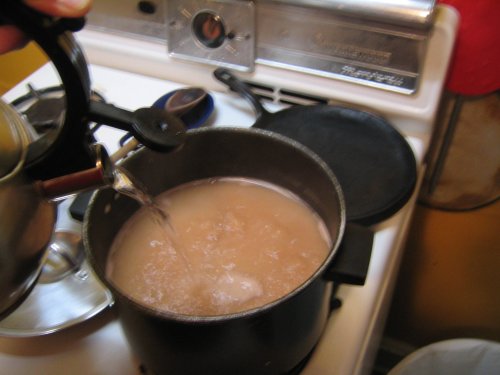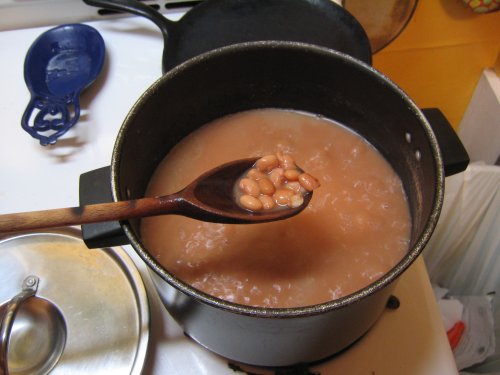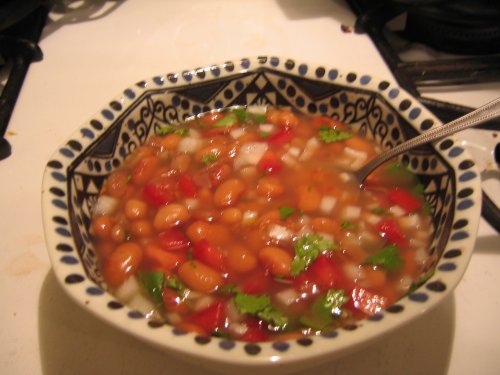
Cooking with EL CHAVO!
How to make Frijoles de la Olla
(otherwise known as
a pot of beans)
A friend of mine not-so-recently asked for my refried beans recipe, and I figured instead of just giving it to him, I'd just share it with everyone.
They are not exceptional beans by any means but they are quite good in their simplicity, and most of the taste comes from some hints that have been passed down to me from my grandma, as well as some tips I've picked up along the way. Also, I don't use any lard as that is unbecoming to a vegetarian. It took longer than expected to write this up (sorry Bob!) but for whatever it's worth, here it is!
Make sure the beans you use are
fresh! Buy them in bulk
at a Mexican grocery store as those are almost always the freshest, Big
Saver on Ave 26 and Figueroa
usually have fresh beans. Beans sealed in 1 or 2 lb. bags are usually
much older than those in the bulk bin. Good beans feel light, their
color is bright
and clean, and they sound kinda hollow when
you cascade a handful in the bin. Beans that look very brown
and
wrinkly are too old and a waste of time; you will be disappointed with
the results.
Clean the beans super good, this is really important. I sort them a handful at a time taking out the little rocks, ugly beans, and those with lots of dirt caked on. If you skimp on this process, somebody is bound to bite into one of those overlooked pebbles, and nothing kills the enjoyment of a meal like a chipped tooth!

I usually just eyeball the
amount I want to use, which I think is
about 3 to 4 cups of dry beans, though thats an amount for a
full-fledged beaner, and it lasts/keeps in the fridge for about a week,
so you may want to adjust the quantity according to your own
upbringing.
Next we fill the
bowl of sorted beans with hot water and let it sit for about 3-4
minutes to loosen up the grime. Then you agitate the beans, dump
out the water, and repeat. I do this about 5 or 6 times until they
start looking really clean, beans tend to have lots of dirt caked on in
a thin layer which is easy
to miss.
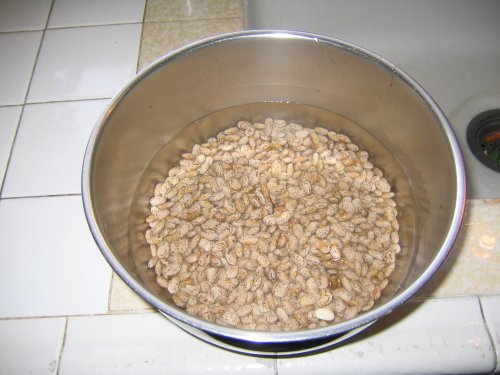
If you don't take off all the grime, the cooked beans will look dark and murky rather than reddish/brownish, and the taste will be negatively altered. Unlike the recommendation of most American cookbooks, I never soak my beans, be it for a few hours or overnight; they still take just as long to cook, the "gassiness" isn't diminished (it may be worse), and they come out tasting odd. Having to plan ahead for beans is unnecessary especially when the benefits are negligible, or non-existent as I insist.
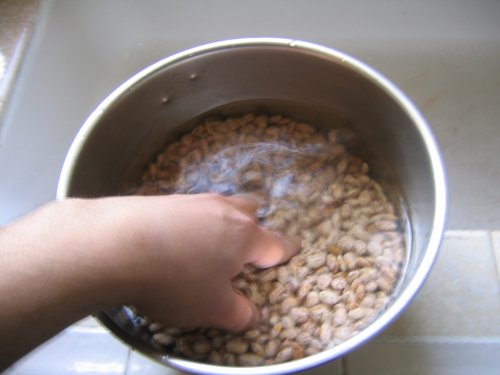
Get a large pot, add lots of cold water, and bring the water to a strong boil. Not kinda hot, a strong boil! Now add some salt to the water. Fuck that shit about your diet and high blood pressure, if you're not going to put salt in, then don't make beans: steam some broccoli instead. Salt is one of the secret ingredients, and you need to cook the beans with the salt as it helps to break down the hardness and it changes the flavor throughout the bean; adding salt afterwards only makes it salty on the surface, and it's pretty lame. Again, I eyeball it to my tastes but you'll need at the very least a teaspoon or two or three, start off with a little, you can taste the beans during the cooking process to see if they need more salt and add some throughout.

Once the water and salt are boiling like crazy, add a small amount of oil, preferably corn, to the mix. My grandma sez it "brings out the color" so I'm going to trust her. A tablespoon seems about right.
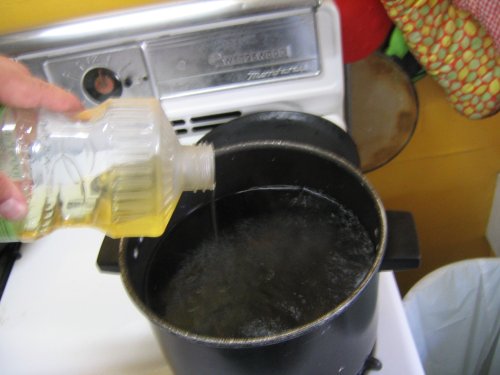
Now you add your sorted,
cleaned,
and drained beans to the boiling water. Keep the burner at high to get
the water up to a boil again. Once it's there, let it boil for
a minute or 3, then turn down the heat to, to a low, medium-low,
setting. Basically, you want the water to be just hot enough
to
bubble and boil, this makes for the best temp at which to cook
beans. Too low, the beans don't cook right, too hot, they
break
down really fast and you have a soup!
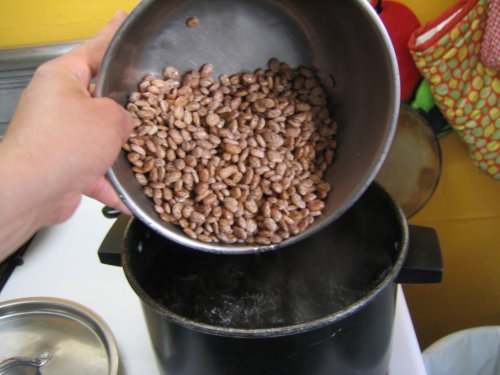
Set your timer as you'll
be cooking them for awhile. I set it for 2 hours and then check them to
see
how much longer they'll need, most often another 30 minutes will do.
